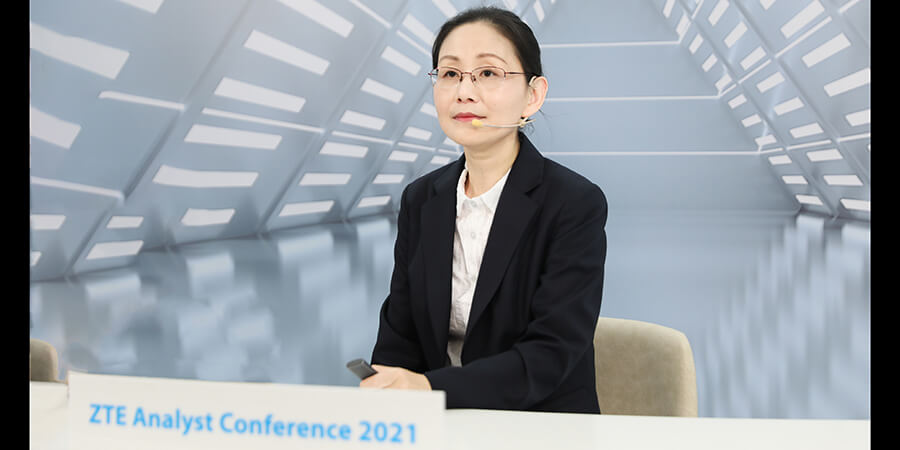Carbon neutrality has become the most urgent and critical mission in the world. Currently, it has been proposed as a target in over 120 countries and regions. The ICT industry is the main force in global economic development. With the large-scale commercial use of 5G, carbon emissions have become a serious challenge to the development of the industry. Building zero carbon networks and achieving carbon neutrality are the strategic objectives of major operators and Internet giants. The ICT industry should not only achieve its own carbon neutrality, but should also empower thousands of industries and promote the carbon neutrality process of them. According to the ITU statistics, in 2020, the ICT industry technology empowers various industries to reduce about 7.8 G tons of equivalent carbon dioxide emissions, accounting for 15% of the total annual emissions. It could be said that the ICT industry contributes greatly to the social carbon emission reduction.
As one of ZTE's core strategies for sustainable development now, ZTE has been committed to green energy conservation and emission reduction for more industries while implementing its low-carbon development. In terms of specific planning, there has been a set of mature ideas. The general overview is as follows: Green operation, green ICT base, green supply chain, and green industry empowerment, are being promoted at the same time.
As is known to all, 5G base stations and data centers are big energy consumers, and more 5G base stations, edge data centers, and large data centers will be deployed in the future. Traditional network energy technologies and construction modes can neither meet the low-carbon and zero-carbon requirements of networks, nor the requirements of operators for sustainable development, thus network energy infrastructure is facing changes. 5G, AI, and other new technologies enable the traditional network energy infrastructure to become digital and intelligent, achieving interconnection, management, and scheduling from power generation to power consumption of the whole energy power supply chain. The network consisting of telecom sites, equipment rooms, and data centers is not only a high-speed data communication network, but also an efficient energy supply network. ZTE proposes the "zero-carbon" energy network that deeply utilizes key technologies such as smart solar energy, smart transformation, smart lithium-ion, smart power distribution, and smart thermal control. It focuses on simplified site, green equipment room, prefabricated full-module data center, and cloud energy management solution. Before, ZTE focused on network energy consumption only, but now it puts more attention on green electricity applications, network energy efficiency, and smart O&M – vigorously promoting the four-technology-based development of energy infrastructure in the ICT industry:
Multiple use of intelligent solar
This involves combining solar energy with power storage, cloud energy management and AI to provide green electricity for sites, equipment rooms, data centers, and the entire park. This network achieves smooth superposition of solar energy in all scenarios, optimizes power supply costs, improves O&M efficiency, and accelerates the application of green energy to the whole network.
Use of intelligent lithium batteries in the whole network
R&D of core technologies such as power conversion, intelligent measurement and control, thermal design, and cloud management, achieves the intelligent upgrade of ordinary lithium batteries. The features of intelligent mixed use, smart voltage boosting, smart power grid shaving, and cloud management, promote the transformation from energy storage to intelligent lithium batteries of the whole network, and fully explores the value of the full lifecycle of energy storage.
Extreme simplization of 5G power supply
Use simplified site construction mode to construct indoor sites as outdoor sites, one-cabinet for outdoor sites, and then complete the evolution to All-Pad mode. Energy efficiency of the sites is improved by more than 95%.
Intensification of prefabricated full-module data center
Apply modular and prefabricated concepts to the whole process of design, production and construction, and shorten the period of data center construction by 40%. At the initial stage, the investment is reduced by 30% and PUE is less than 1.25, highlighting the economic effect.
ZTE's zero-carbon energy network integrates multiple new technologies such as 5G, IoT, cloud computing, and AI, and leads the digital and intelligent transformation of the traditional network energy infrastructure, fully facilitating the evolution of operators' network to low-carbon and zero-carbon network.
